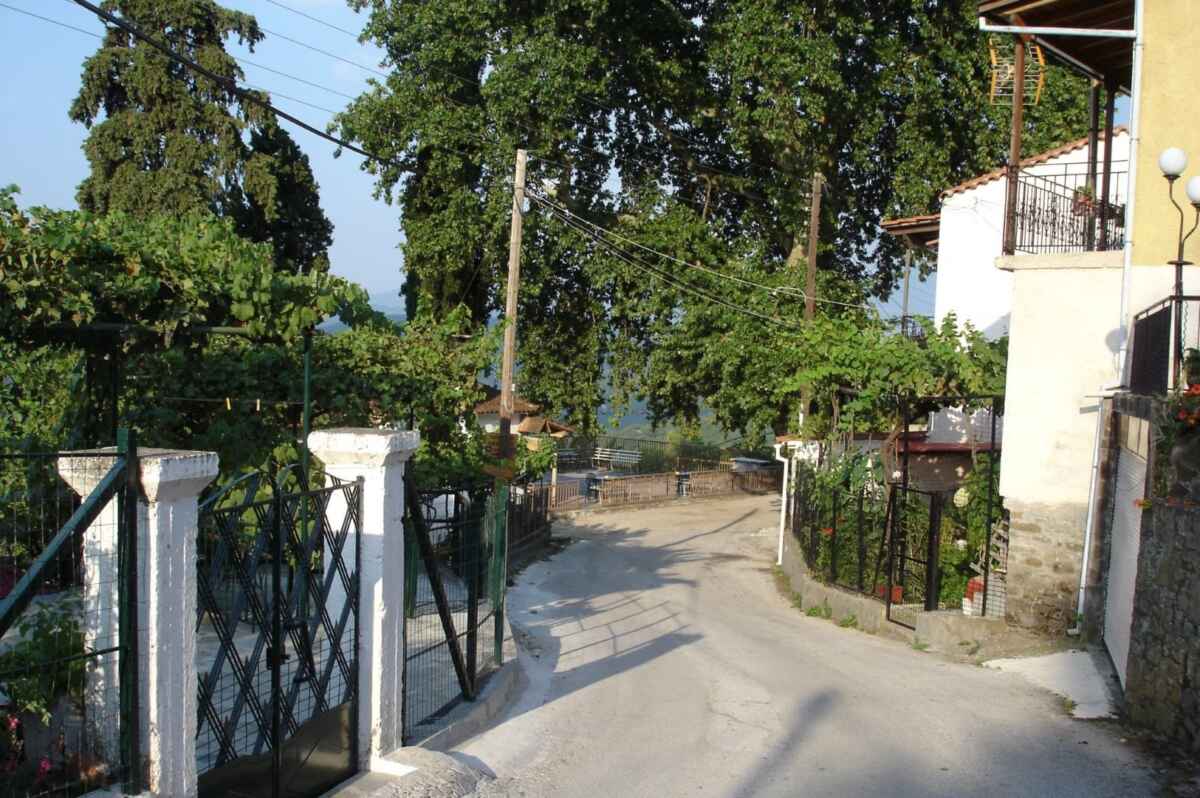On the northwest side of the province of Konitsa and just before the river Aoos meets Sarantaporos, is the village of Aidonochori. The old name of the village was Ostanitsa (=fortified place) which according to the chronographer of Epirus P. Aravantinos was a medieval village that belonged to the province of Pogoni. It was built around 800 AD and listed 800 families and 43 churches of Byzantine style. The renaming of Ostanitsa to Aidonochori took place on 7/8/1919 by taking its name after the chapel of Panagia “Aidonolalousa” (located on the north side of the village).
Due to its geographical location, Aidonochori has its own special history. Next to the Albanian border, it was the first village which was attacked by the Italian invasion. During the advance of foreign invading troops in our country in World War II, it experienced the inhuman character of the Italian and German conquerors resulting to its complete destruction. After a long period of time, as a minimum honor and recognition by the Greek State, Aidonochori was included in the list of martyr villages of our country with a Presidential Decree. Today, the village consists of 50 permanent residents who are mainly engaged in agriculture, animal husbandry, agritourism and wood carving.
The annual festival is held on June 30, in honor of Agioi Apostoloi and on the 15th of August another festival is held to honour the Virgin Mary. In Aidonochori, you will admire many attractions, many of which are characterized as newer monuments. The watermill near Bourazani is still in use today. Hunting in the dense forests, fishing in the river Aoos and walking along paths are some of the activities that are regularly practised.
Walking in the settlement of the village, we are impressed by the fact that there are many churches and chapels. The most important is the central church of Agios Apostolos dating from 1857. Its traditional architecture (a three-aisled basilica with a dome, an ornate iconostasis and remarkable frescoes in the domes of the middle aisle) arouses the admiration of both locals and visitors.
As we leaving the settlement, at a distance of about 2 km west of the village, we can see the Monastery of Taxiarches Gouras. It was built on a rocky and fortified location in the 16th AD and offers an incredible view of the rivers Aoos and Sarantaporos. For centuries, this monastery has been the religious and spiritual center of the area and has helped the inhabitants of the surrounding areas in various ways during difficult times. The temple of the Monastery was destroyed by the Turks in 1829. However, the chapel of Agios Charalampos (dating from the 17th AD) is preserved and has remarkable frescoes. An impressive feature of the Monastery is the vaulted crypt. It is below the sanctuary of the temple (2 meters deep) and it can accommodate several hundred people. During the summer months, the monastery operates camps for children and young people under the responsibility of the Diocese of Dryinoupolis, Pogoniani and Konitsa.
During the tours and before your departure from Aidonochori, we suggest you to make a stop at the cafe and taverns of the wider area of the village and taste local tsipouro and many fine delicacies.










